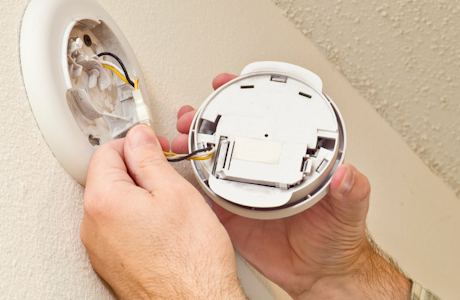
Is your Home Safe from Gas Leakage?
The everyday modern household has an almost irreplaceable reliance on gas, from boilers, gas fires and cookers in our homes, it is a substance that keeps up warm and keeps us fed. However, the gas we use for our appliances is, ironically, one of the most dangerous substances in our household. It’s necessary for all gas appliances to be carefully maintained to avoid them being hazardous.
According to the Gas Safe Register, 1 in 6 homes inspected by engineers contain unsafe gas appliances. Keeping up-to-date with the maintenance of your gas appliances is essential to the safety of your home and everyone living there.

When things go awry, gas can leak from appliances and lead to fires, explosions of carbon monoxide poisoning. To avoid this, you need to ensure that your appliances are all fitted, maintained and serviced by qualified and Gas Safe registered professionals.
How to have a gas safe home
While it is important to have a professional install all the appliances, there are a number of checks and precautions you can do yourself to keep an eye on the safety of your home.
Make sure that you and everyone else in your home are aware of the easy to spot warning signs that indicate a problem with an appliance. Noticing and identifying a problem early on can help avoid a disaster:
Ventilation for gas appliances can include chimney flues and air vents and bricks. Black soot marks appearing on an appliance can be a sign that the ventilation is blocked.

Carbon monoxide is a highly dangerous colourless and odourless gas, making it difficult to detect until it’s too late without a carbon monoxide detector. All homes containing gas appliances should have a detector, which can be bought from most DIY stores and are readily available to buy online. When choosing an alarm, make sure that it meets European safety standards.
Your carbon monoxide alarm should be fitted in the same room as the gas appliance and located at least one metre away from it. The alarm should be positioned at head height and should not have anything obstructing it or be located near a source of ventilation or condensation (eg. a kettle).
Your carbon monoxide alarm should have a ‘test’ button. Make sure that you make a habit of regularly testing your alarm to check that it is still working and the batteries do not need changing.
If there is any doubt in your mind about whether a gas appliance is working properly or not, then you should refrain from using it until it has been properly checked by a professional.
Every 12 months you should have your gas appliances safety checked by a Gas Safe registered engineer to ensure that they are operating efficiently and safely.
If you wish to learn more about how to keep your premises safe, contact Karsons to find out more about our expertise in this field. We have a wealth of knowledge and experience in making sure your building is kept safe and within compliance. Contact us here to find out more about how we can help you.
Karsons Consulting are members of the Chartered Institute of Building Services Engineers, The Association of Consultancy and Engineering, British Institute of Facilities Managers and the Building Services Research and Information Association.